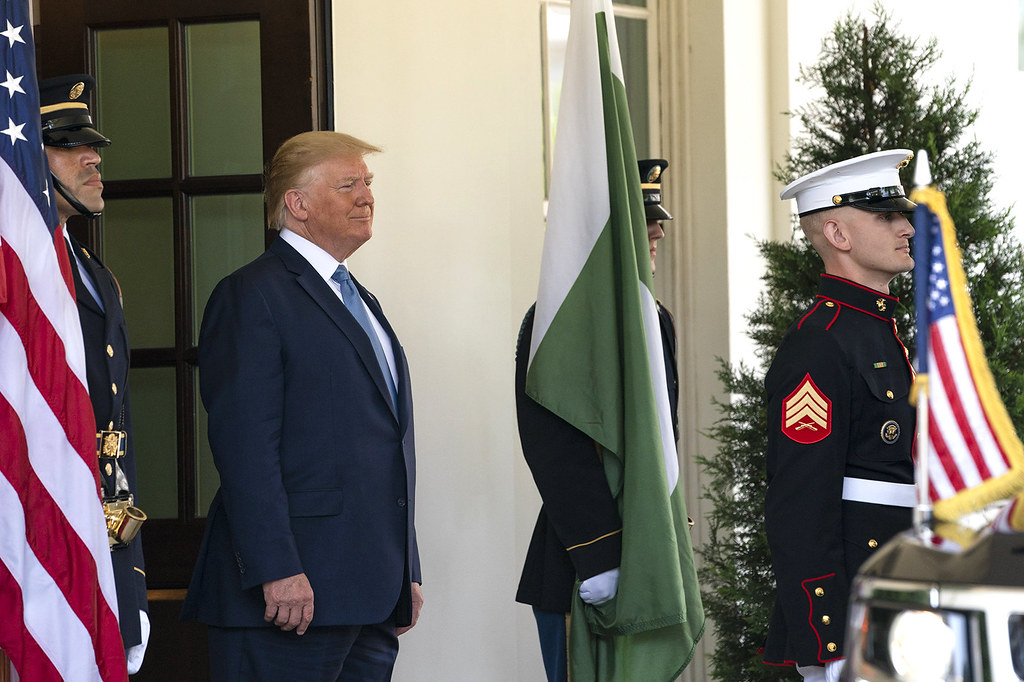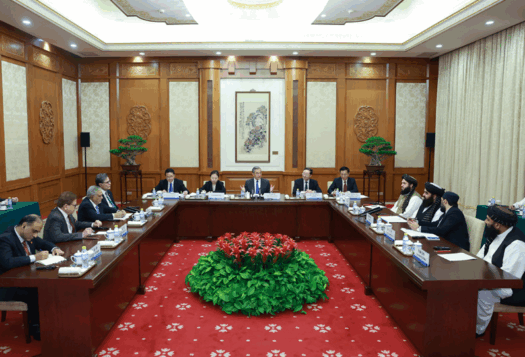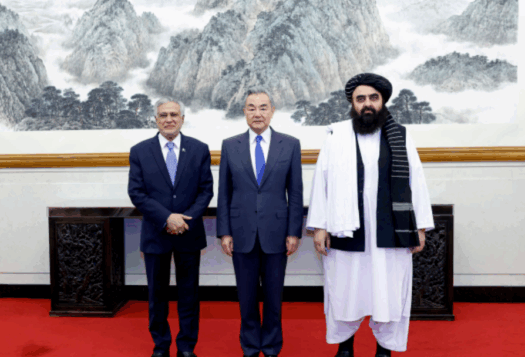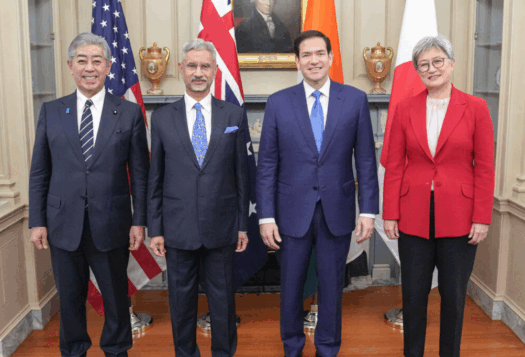
On July 25, Pakistani Deputy Prime Minister and Foreign Minister Ishaq Dar met with U.S. Secretary of State Marco Rubio in Washington. A day later, U.S. CENTCOM Chief General Michael Kurilla was in Pakistan for a conference of regional chiefs of defense staff, including senior military leaders from Pakistan, the United States, and the Central Asian republics. These high-level engagements followed the unexpected meeting between U.S. President Donald Trump and Pakistani Chief of Army Staff Field Marshal Asim Munir in June. Furthermore, the Trump administration’s handling of the India-Pakistan conflict in May won praise inside Pakistan for being balanced, amid general concerns over the strengthened U.S.-India strategic relationship.
In the past decade and a half, the U.S.-Pakistan relationship has ebbed from the halcyon of post 9/11 cooperation due to acrimony resulting from the Osama Bin Laden raid, Salala and Raymond Davis incidents, divergent interests in Afghanistan and more recently the U.S. withdrawal, as well as claims of American interference in Pakistani domestic politics. A “reset” in ties, which some commentators suggest these recent developments should be read as, has been attempted unsuccessfully aplenty before. Is this then truly a reset in ties or a chance for more sustainable and strategic relationship-building? How can both Pakistan and the United States navigate this transition?
America First and Trump 2.0’s Priorities
Outlining American foreign policy direction at the outset of the new administration in January, Secretary Rubio had highlighted the core principles that would guide future foreign engagement: does it make America safer, stronger, and more prosperous? These principles were a natural extension of the “America First” priorities that President Trump outlined after coming to power, which also extended to trade policy.
Unlike previous decades, when U.S. engagement was driven by strategic competition or ideological commitments, Trump 2.0 advances a more transactional approach. Relationships are no longer assumed—they must be earned through the provision of immediate, tangible benefits to the United States. For countries like Pakistan, this marks a stark shift in how they have dealt with Washington before. The old assumption that the United States would remain involved in the region out of strategic inertia no longer holds. Instead, Islamabad now has to navigate a Washington that weighs partnerships by what they deliver, not what they represent.
A key component of this new reality is President Trump’s emphasis on personal loyalty and relationship-based diplomacy, often favoring trusted family members and long-time associates for key roles. While this approach has drawn criticism from some quarters, it has also signaled to other nations—Pakistan included—that success in navigating this administration requires investment in direct, personalized relationships.
Relationships are no longer assumed—they must be earned through the provision of immediate, tangible benefits to the United States. For countries like Pakistan, this marks a stark shift in how they have dealt with Washington before.
Relationships are no longer assumed—they must be earned through the provision of immediate, tangible benefits to the United States. For countries like Pakistan, this marks a stark shift in how they have dealt with Washington before.
Pakistan Navigates Trump 2.0
During the 2024 U.S. presidential election campaign, the clamor inside Pakistan was that Trump’s return to the White House would be beneficial for the beleaguered Pakistan Tehreek-e-Insaf (PTI) and its incarcerated leader Imran Khan, who was being backed by the diaspora lobbying on issues of human rights and who had made its support to the Republican candidate conditional upon action on these issues. However, since the Trump swearing-in, the Munir-Sharif hybrid regime in Pakistan has played its cards well.
Pakistan’s first breakthrough with the new Trump administration came with aiding the arrest of the Abbey Gate bombing mastermind in March. This breakthrough was the result of collaboration between the CIA and the ISI, after a meeting between their two chiefs earlier this year. According to insights from private discussions within Pakistan, the scale of the local dedicated intelligence effort to track Mohammad Sharifullah, the ISIS-K leader responsible for the attack that killed several U.S. servicemen, reportedly involved hundreds of intelligence operatives tracking the tip-off provided by the CIA. This showed Pakistan’s importance in counterterrorism cooperation in the region and strengthened President Trump’s strongman image domestically.

In early April, Pakistan courted international, especially American, businesses to invest in its critical minerals deposits, a move in line with the Trump administration’s policy on diversifying the critical supply chain to secure U.S. growth. Later that month, the newly formed Pakistan Crypto Council, a regulatory body for blockchain and digital assets, signed a letter of intent with World Liberty Financial, a “decentralized financial platform and crypto exchange” owned in part by President Trump’s business entity and run by his sons.
When the conflict erupted between India and Pakistan in May, President Trump’s offer for mediation, claims of a good relationship with both sides, and his even-handed management of the crisis surprised some regional watchers. But it can be considered a consequence of the Pakistani regime’s careful management of the foreign policy engagement and personal relationship with Trump. Similarly, when U.S. CENTCOM chief General Michael Kurilla praised Pakistan as a “phenomenal partner in the world of counterterrorism” during a U.S. House Armed Services Committee hearing, it indicated prioritizing action on and bilateral cooperation against ISIS-K targets.
Sensing a much awaited opportunity, Pakistani efforts to make headway in ties with the United States and key personnel has gained momentum since. Islamabad has fruitfully negotiated what is widely being viewed as a Pak-U.S. trade deal, though details are still awaited, coupled with President Trump’s announcement of developing the country’s oil reserves, even as U.S. trade negotiations with India falter. There is evidence from the U.S. readout of the Dar-Rubio meeting that Pakistan mediated between Washington and Tehran during the Iran-Israel war in June. Pakistan is also the first country to nominate President Trump for the Nobel Peace Prize, even amidst domestic criticism for his bombing of Iran and the catastrophe in Gaza. Just recently, Islamabad awarded General Kurilla the Nishan-e-Imtiaz (Military) for his “outstanding contributions” to regional peace.
Is This Really a Reset?
While the recent turn of events is a positive for future engagement between the two sides, it needs to be evaluated in the broader context of U.S. geopolitical interests and the Washington-New Delhi relationship. Headlines are not policy shifts, and tactical or transactional measures need to be differentiated from long-term strategic priorities.
For the United States, the foremost policy priority is countering a rising China. As it implements elements of its Indo-Pacific Strategy, India’s prominence is likely to remain central to U.S. engagement in the region, regardless of who is in the White House. India’s potential for trade with the United States, a Trump administration priority, particularly due to the size of the Indian economy, its capacity to buy U.S. defense equipment, and its ability to invest in U.S. businesses will buy it comparatively more capital in Washington.
While the supply of critical minerals, crypto assets, and oil exploration are significant avenues to forge a new economic direction in the Islamabad-Washington relationship, they remain nascent and require sustained effort to unlock. The U.S.-Pak counterterrorism cooperation against ISIS-K is an important regional security issue for Washington, but it remains a relatively lower-tier one. Islamabad has to recognize that South Asia is lower down the priority list for a United States preoccupied with the Middle East, Europe, and East Asia.
While the recent turn of events is a positive for future engagement between the two sides, it needs to be evaluated in the broader context of U.S. geopolitical interests and the Washington-New Delhi relationship. Headlines are not policy shifts, and tactical or transactional measures need to be differentiated from long-term strategic priorities.
However, this should not be seen as a zero-sum endeavor for Pakistan. The relative gains from improved ties and trade with the United States can spur spin-offs, including a careful U.S. balancing act in South Asia (as evidenced by the May conflict), an economic stimulus, and job creation at a time when Pakistan is dealing with a polycrisis.
For its part, Pakistan can leverage these opportunities by getting its house in order by tackling the instabilities of militancy and political and economic unrest. Its much-touted critical minerals, including copper, gold, and lithium deposits, are located in the militancy-hit Balochistan and Khyber Pakhtunkhwa; both surging with violence in recent years. Additionally, Pakistan’s political crisis due to disputed elections, economic instability, and brain drain concerns have to abate for it to become an attractive option for U.S. businesses to invest in.
For now, the United States is likely to prioritize trade over alliance politics. However, once the dust settles, the onus rests on Washington, not to view Pakistan from the U.S-China binary. Pakistan’s strategic relationship with China has legitimate historical, strategic, and security sensitivities that transcend U.S-China rivalry. In addition, Washington would have to take seriously the concerns of the Pakistani diaspora on human rights issues and democracy in the country for a sustainable relationship that endures power transitions in Pakistan.
Thus, this latest shift may not be a strategic reset in ties, but a step in that direction. What can likely help it stick is a dialing down of expectations, especially in the short-term, and a focus on both sides to build a sustained economic and security relationship that can lead to accrual of more strategic value in the future.
Views expressed are the author’s own and do not necessarily reflect the positions of South Asian Voices, the Stimson Center, or our supporters.
Also Read: Trilaterals in Testing Times? The Pakistan-Afghanistan Dynamic and China’s Diplomatic Calculus
***
Image 1: Pakistan MFA via X
Image 2: The White House via Openverse


